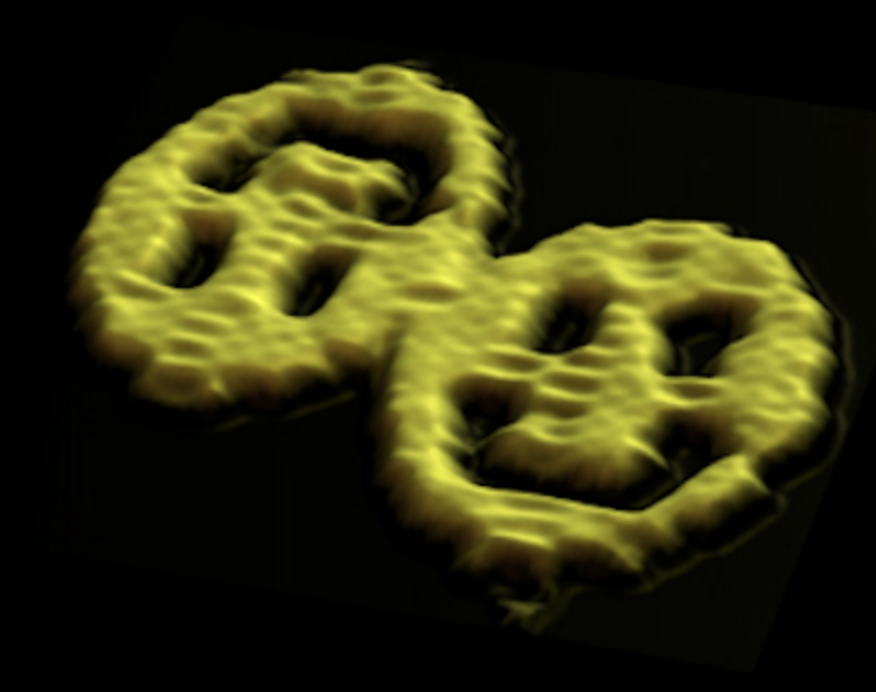Week 8: Nanotechnology + Art
This week’s materials expanded my understanding of how nanotechnology intersects with art and science, specifically in material manipulation, ethical implications, and visualization at the nanoscale. The reading The Nanomeme Syndrome (Artsci UCLA) provided a foundation by explaining how the language and metaphors used in nanoscience shape public perception and artistic interpretations. It argues that the “nanomeme”—a conceptual framework combining science, media, and imagination—has contributed to exaggerated expectations about what nanotechnology can achieve (Artsci UCLA). This idea made me critically assess how artists use nanotechnology not just as a tool, but also as a narrative device to discuss broader cultural and ethical questions.
Figure 1: Conceptual visualization from “The Nanomeme Syndrome.” Image source: artsci.ucla.edu.
Ray Kurzweil’s TED Talk on the coming singularity introduced the idea of rapid technological progress driven by nanotechnology. He discussed how nanoscale devices could potentially repair human tissues, extend life, and merge biological and digital systems (Kurzweil). This content made me reflect on how nanotechnology challenges conventional definitions of both art and science by introducing the possibility of intelligent materials and self-replicating systems. It raised a practical concern: how do we manage the ethical and societal implications of integrating such technologies into creative practices?
Paul Rothemund’s TED Talk demonstrated a clear example of nanotechnology’s practical applications through “DNA origami,” where DNA strands are folded into specific shapes (Rothemund). This example highlighted that nanotechnology can be both scientifically rigorous and creatively driven. Rothemund’s ability to control molecular structures with precision points to how artists and scientists can collaborate to push the boundaries of what is considered an artistic medium.
Figure 2: Paul Rothemund's DNA origami smiley face. Image source: rothmundlab.caltech
The documentary Making Stuff: Smaller (PBS) reinforced these concepts by showing how nanoscale materials are being developed to create stronger, lighter, and more adaptable products. It emphasized the role of nanotechnology in shaping future materials, which has direct implications for how art can evolve. This content made me realize that the integration of nanotechnology into art is not just about making things visually striking but about material innovation and cross-disciplinary problem-solving.
Figure 3: Making Stuff: Smaller documentary screenshot. Image source: PBS.org.
In summary, this week’s materials demonstrated that nanotechnology is not just a futuristic concept but a current reality affecting both artistic and industrial fields. Artists are using nanoscale tools to rethink materiality, challenge ethical norms, and expand the possibilities of form and function.
Works Cited
Artsci UCLA. The Nanomeme Syndrome. https://artsci.ucla.edu/sites/artsci.ucla.edu/files/publications/The%20Nanomeme%20Syndrome.pdf.Accessed 23 May 2025.
Biotechnology - Art, Science & Technology. Uploaded by user. Accessed 23 May 2025.
Kurzweil, Ray. “A University for the Coming Singularity.” TED Talks, https://www.ted.com/talks/ray_kurzweil_a_university_for_the_coming_singularity?language=en. Accessed 23 May 2025.
PBS. Making Stuff: Smaller. https://www.pbs.org/wgbh/nova/series/making-stuff/#making-stuff-smaller. Accessed 23 May 2025.
Rothemund, Paul. “DNA Folding, in Detail.” TED Talks, https://www.ted.com/talks/paul_rothemund_dna_folding_in_detail?language=en. Accessed 23 May 2025.




Comments
Post a Comment